It’s been a little over 20 years since Hayes entered the disc brake market with the original HFX-Mag. Though there were other brands offering disc brakes at the time, it was Hayes that popularised the modern hydraulic disc brake, changing rim, fork and frame design forever after.
Though the Hayes HFX-Mag dominated the mountain bike market for nearly a decade after it was first released, fundamentally it didn’t change a whole lot in that time though. At the same time, brands like Formula, Magura and Shimano were stepping up their game, and then Avid introduced the Juicy. Hayes tried to retain market share by working the Mag into various offshoots, but it wasn’t enough to keep up with the Jones’, and within a few years the brand had dropped off in popularity.
Despite releasing new models since, Hayes has struggled to regain its cache. However, the American brand is hoping to turn things around with the all-new Dominion.
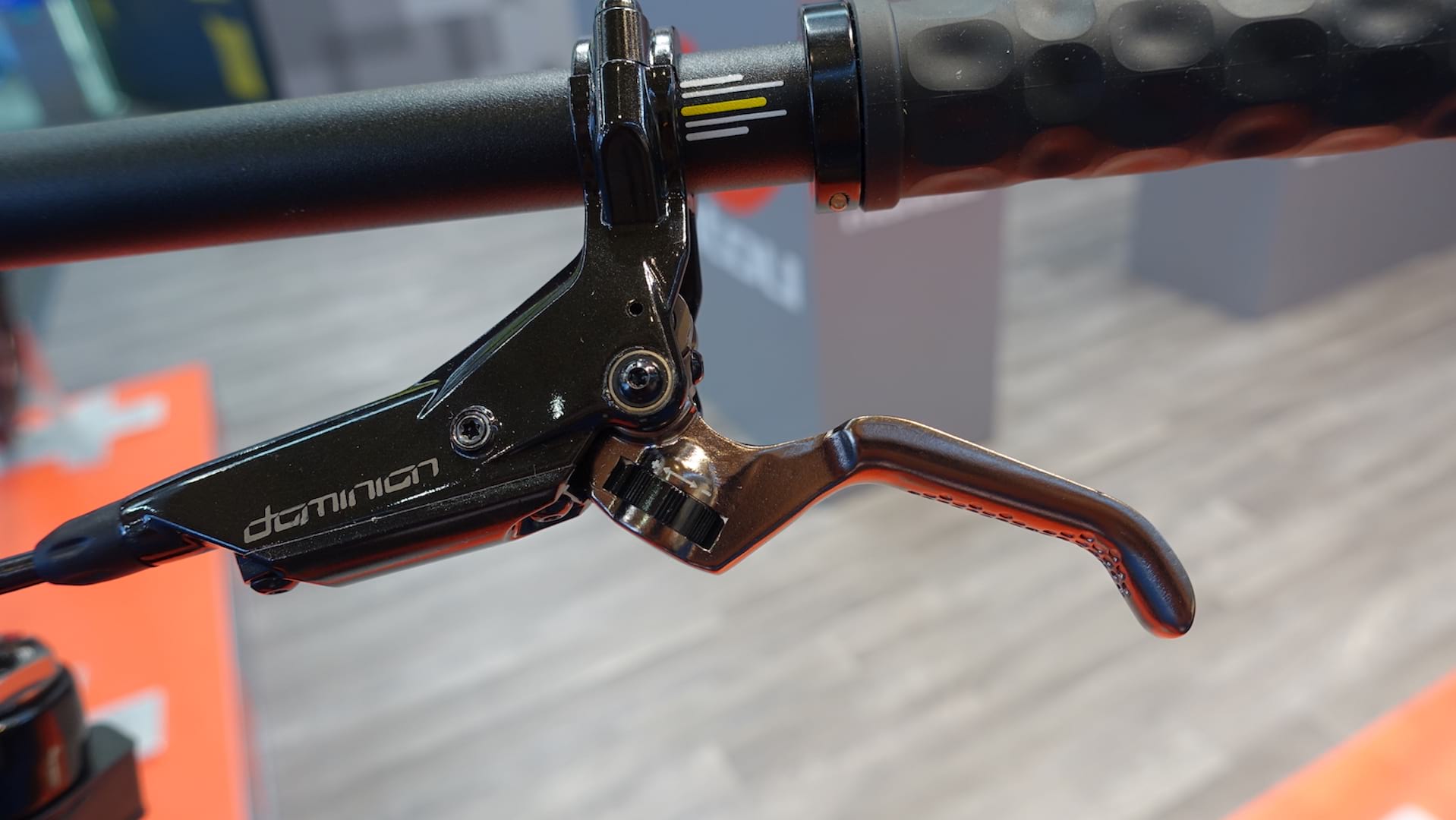
Hayes Dominion A4 Disc Brake Features
- 4-piston brake designed for trail, enduro, downhill and e-MTB use
- New A4 calliper
- 4 x 17mm diameter pistons
- Two-Stroke bleed port
- DOT 5.1 brake fluid
- Crosshair calliper adjustment
- Alloy lever blades
- Tool-free adjustable reach
- Adjustable dead stroke via 2mm hex key
- Semi-metallic brake pads (sintered metallic brake pads also available)
- Confirmed weight including lever, calliper, pads & full-length hose: 317g (rear) & 301g (front)
- Claimed weight: 310g (front brake lever, hose, calliper, pads & mounting bolts)
- RRP: €195 per end (plus rotors & adapters)
Designed as a powerful 4-piston disc brake, the new Dominion A4 is a genre-less brake that Hayes says is ready for downhill, enduro, trail and e-MTB use. Hayes has been working on the design for the past two years, with a load of testing and analysis to work out how riders use their brakes today. Measuring riding speeds, braking temperatures, brake force pressures and deceleration, the engineers wanted to find out how hard riders pull the lever, how long they pull and hold the lever at a specific force level, and how they expect the power to change throughout the lever stroke.
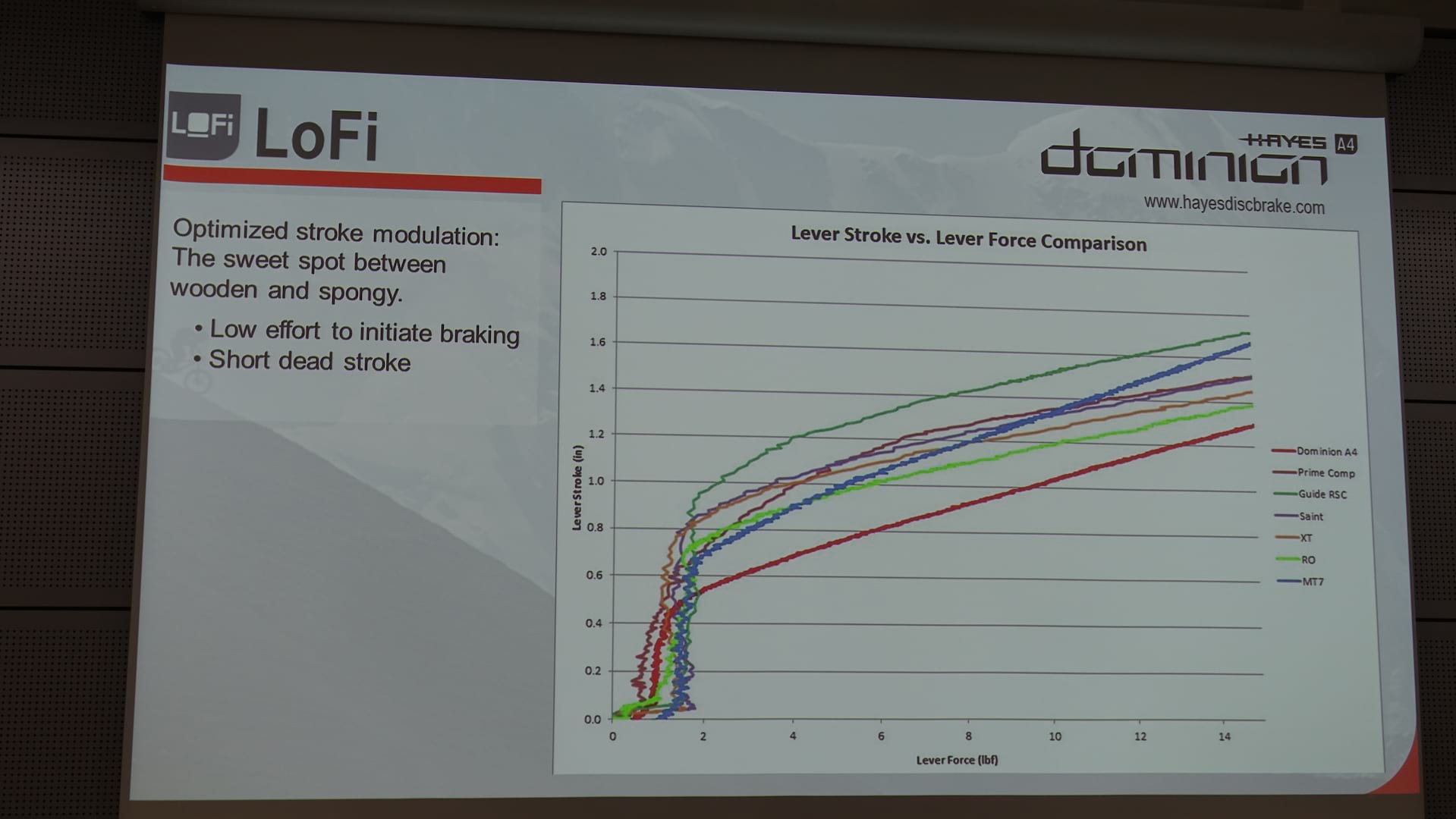
The result of Hayes’ research is its new LoFi concept: Low lever effort, combined with a high Fidelity output force. With the LoFi concept, Hayes says it has achieved several goals;
- Minimised the dead stroke: less lever free throw before the pads engage
- Reduced effort at the lever: less force required by the riders hands to achieve the same braking power
- High initial ramp-up: a clearly detectable ramp-up at the initial pad contact
- Steadily increasing effort for the remainder: a predictable and consistent increase in braking power beyond the bite point
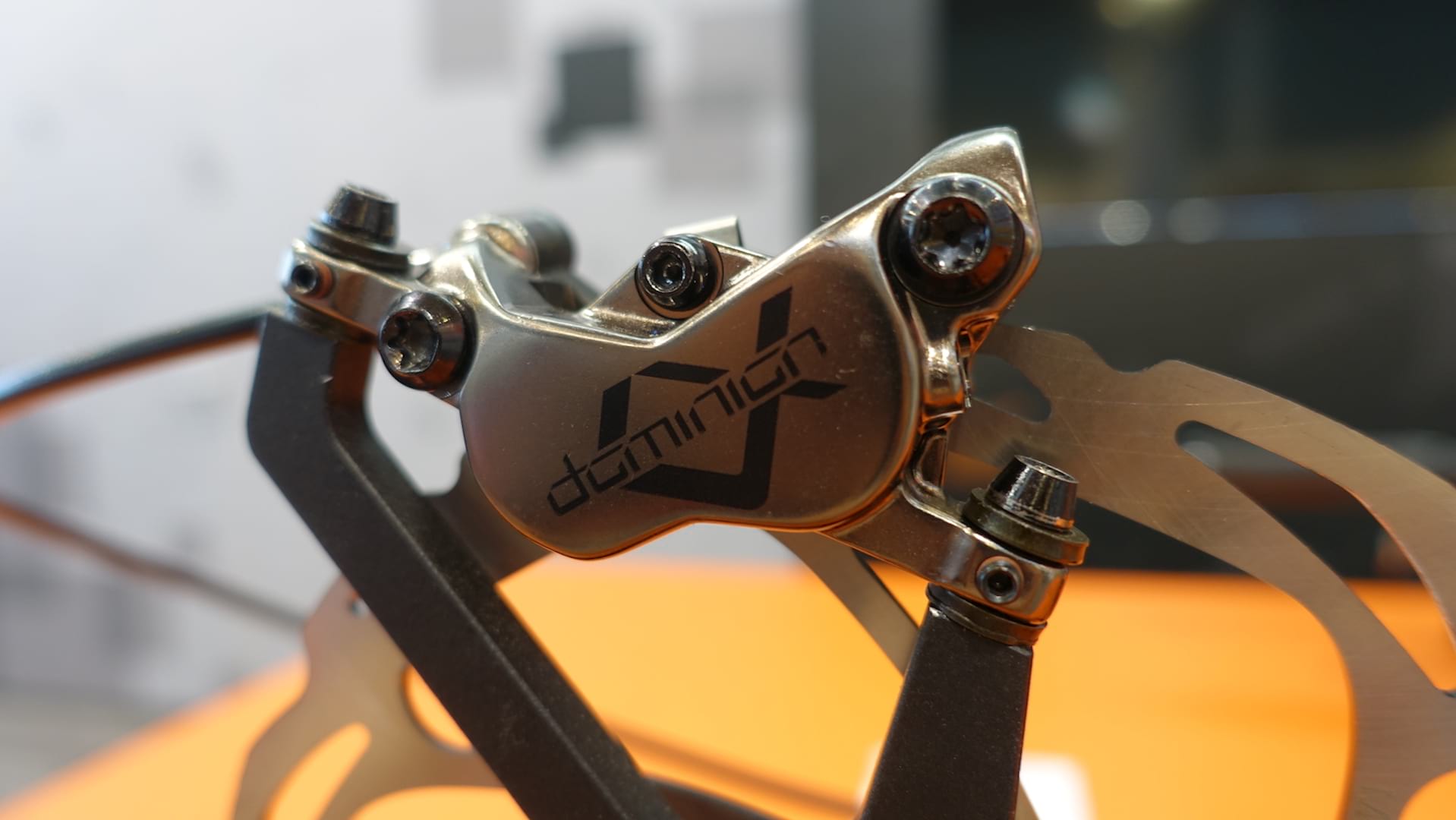
A4 Callipers
Braking power is achieved by the new A4 calliper, which is a big hunk of alloy that houses four huge 17mm diameter pistons. Hayes has carried over its Crosshair design, which sees two small grub screws used on the calliper mounting bolts, in order to help you fine tune the position of the pads over the rotor.
New is the Two-Stroke bleeding system (brought over from Hayes motorsport division), which sees a bleed port on each side of the calliper. This design allows you to bleed the brake calliper on one side first, and if it still feels like the lever is a little soft and spongy, then you can carry out a bleed on the other side, to ensure every last bubble of air has exited the system.
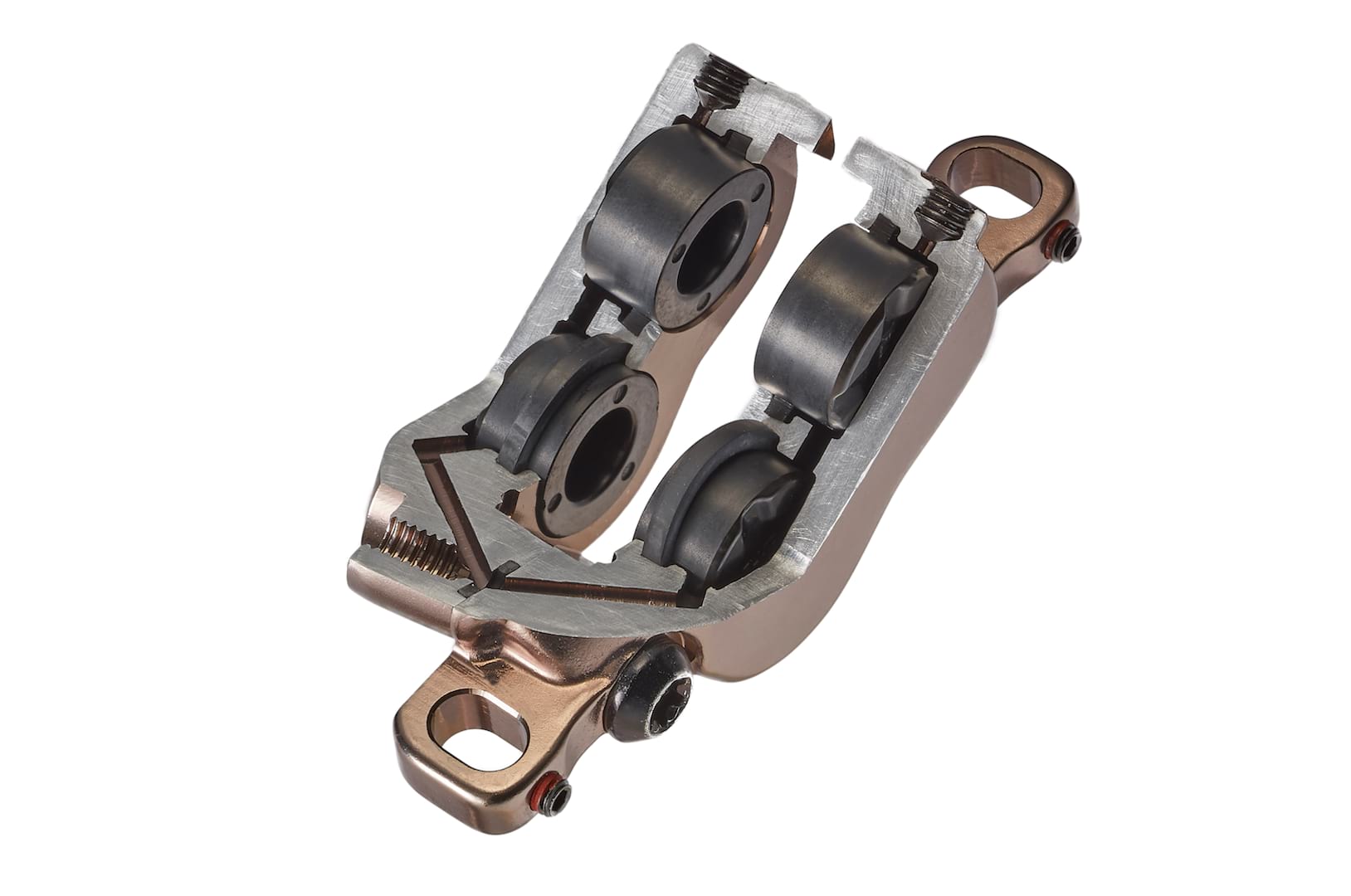
On the note of bleeding, the Dominion A4 is loaded with DOT 5.1 fluid, which Hayes says is still the best performing brake oil that you can build a disc brake with. According to the chaps we spoke with at Hayes, they say DOT fluid is regulated much more stringently than Mineral Oil. They also point out that Mineral Oil isn’t a natural fluid, but a synthetic oil, and that no brake fluid – DOT, Mineral or otherwise – is 100% environmentally friendly.
Oh, and did you know Hayes have a Lifetime Leak-Proof Warranty? Well, now you did!
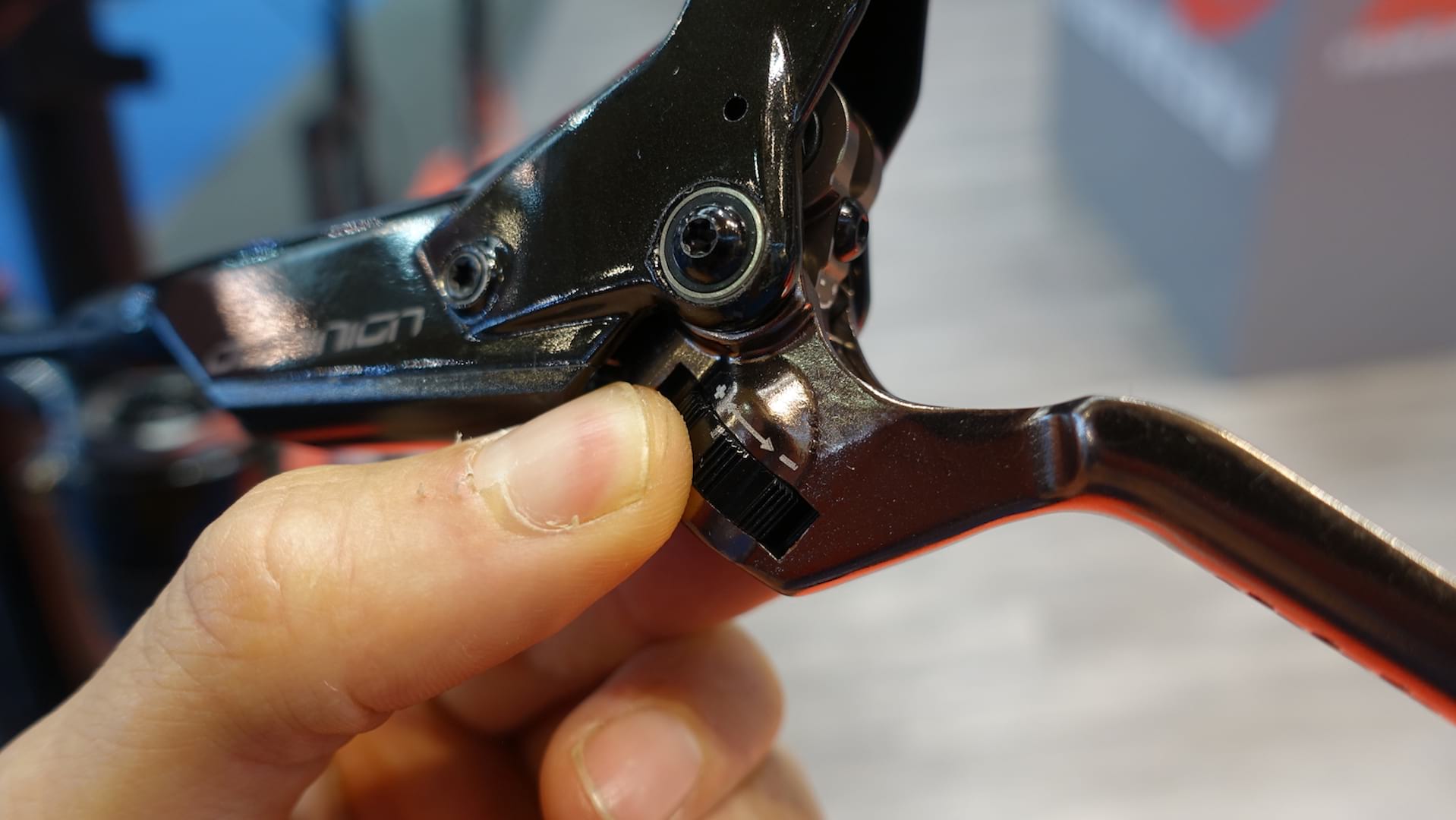
Dominion Brake Levers
Up at the lever end, the new Dominion brake levers are also entirely new. Using a large alloy lever blade with dimples for extra texture, the lever features an indexed tool-free reach adjustment dial.
Inside the master cylinder, Hayes has gone to great lengths to provide a firm and immediate bite point. Each brake lever is calibrated at the factory to ensure the main cup seal is setup as close to the timing port as possible. This allows for minimal dead stroke, so that the pads engage quicker when you depress the lever blade. However, a small 2mm hex key allows you to increase the dead stroke if you prefer more lever throw.
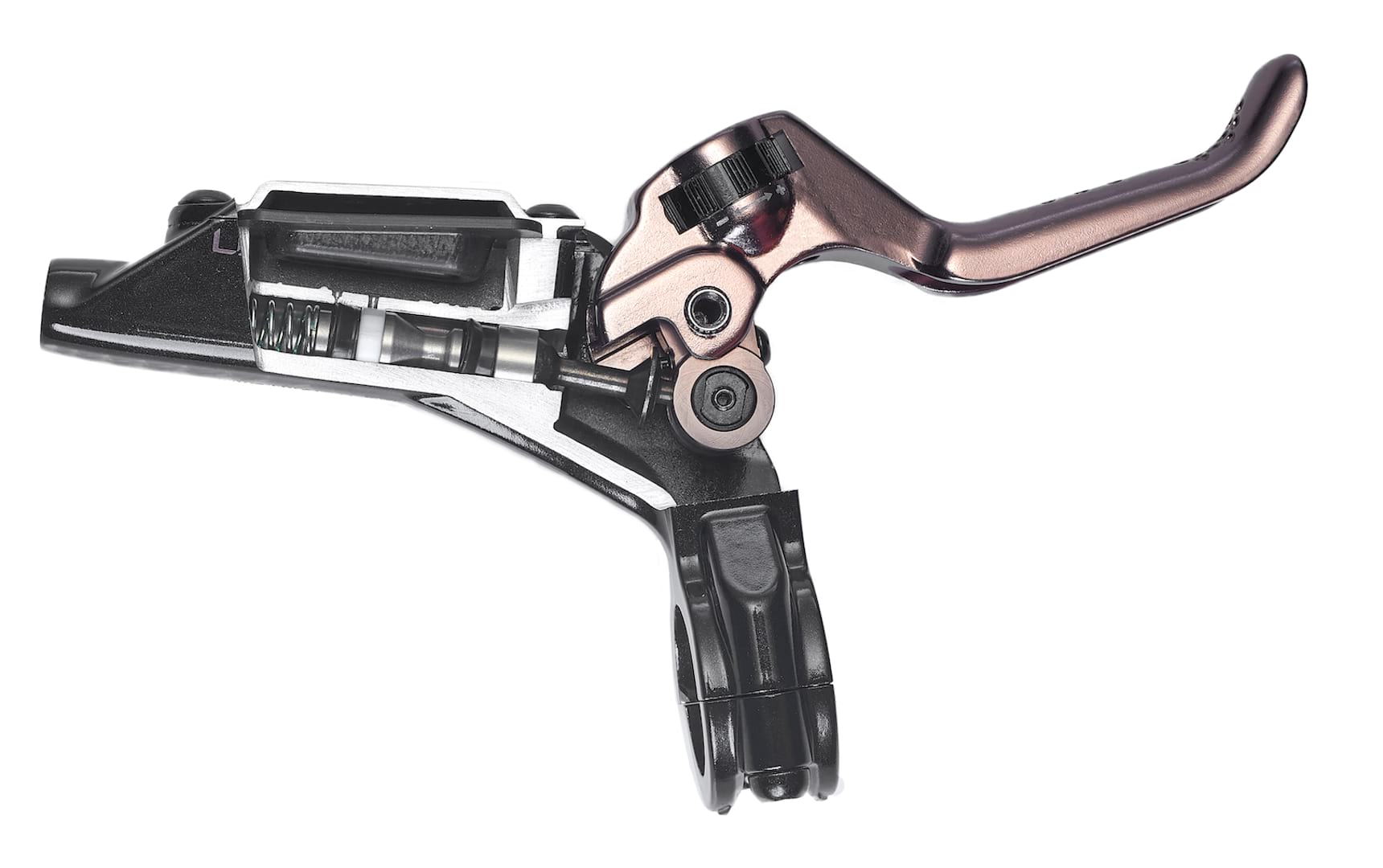
To keep things smooth, there’s a sealed bearing for the main lever pivot, as well as a glide ring inside the piston to reduce friction. Behind the lever blade, there’s a wee linkage called ‘Stable Rate’, which connects the lever to the master cylinder piston. This linkage helps to reduce any weird curves in the lever force, so you end up with a nice linear rate for a more predictable feel.
The lever bodies themselves are ambidextrous, with a split clamp offering easy fitment. Hayes also has the brilliantly named ‘PeaceMaker’ clamps for bolting a Shimano or SRAM shifter onto the Dominion brake lever.
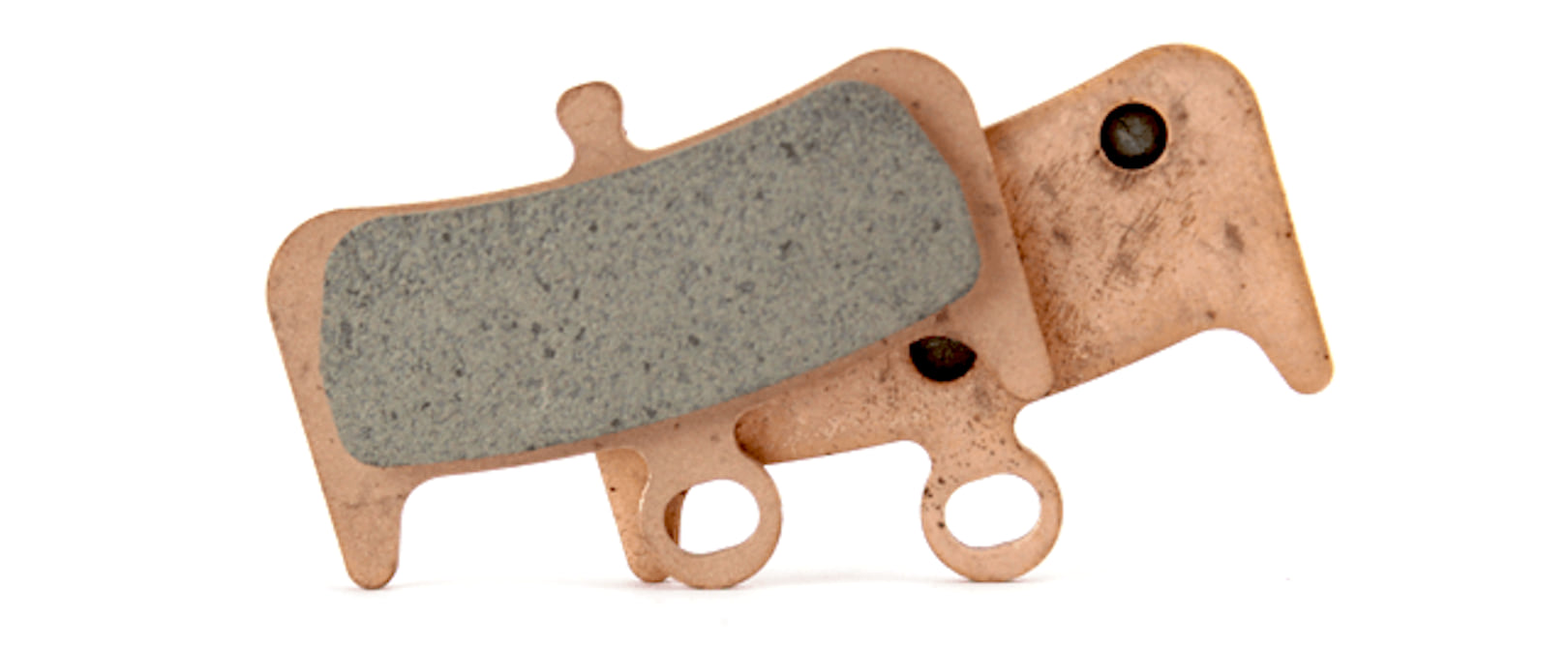
New Pads & Rotors
On top of all that, Hayes has some fresh rotors to go with the Dominion. The stainless steel rotors measure up at a generous 1.95mm thick, and in the quest to minimise noise and vibration, Hayes has given them a fancy MRC acronym that stands for ‘Modal Resonance Cancelation’. It sounds obscure, but apparently Hayes has determined the resonant frequency of the rotor, and has designed the Dominion’s new T106 (semi-metallic) and T100 (sintered metallic) brake pads with an opposing resonant frequency. Just like noise-cancelling headphones, we’re told that the new rotors and pads are dead quiet.
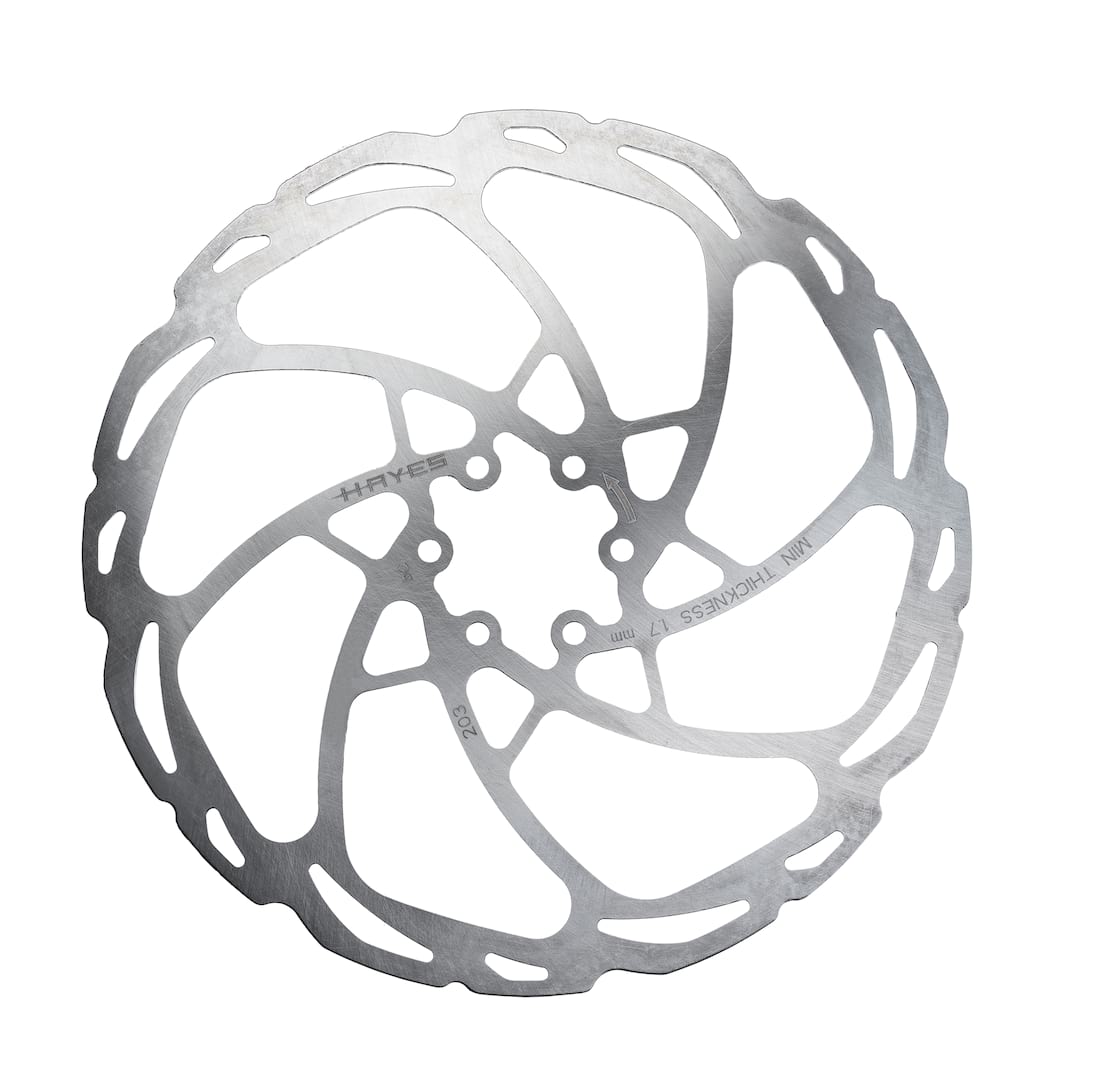
Rotors will be sold separately at just over €40 per end, while the brakes will retail for €195 per end. No word on UK availability and pricing just yet.
For more information, head to hayesdiscbrake.com






Domain, have you already re-named it or is it called the DOMINION?